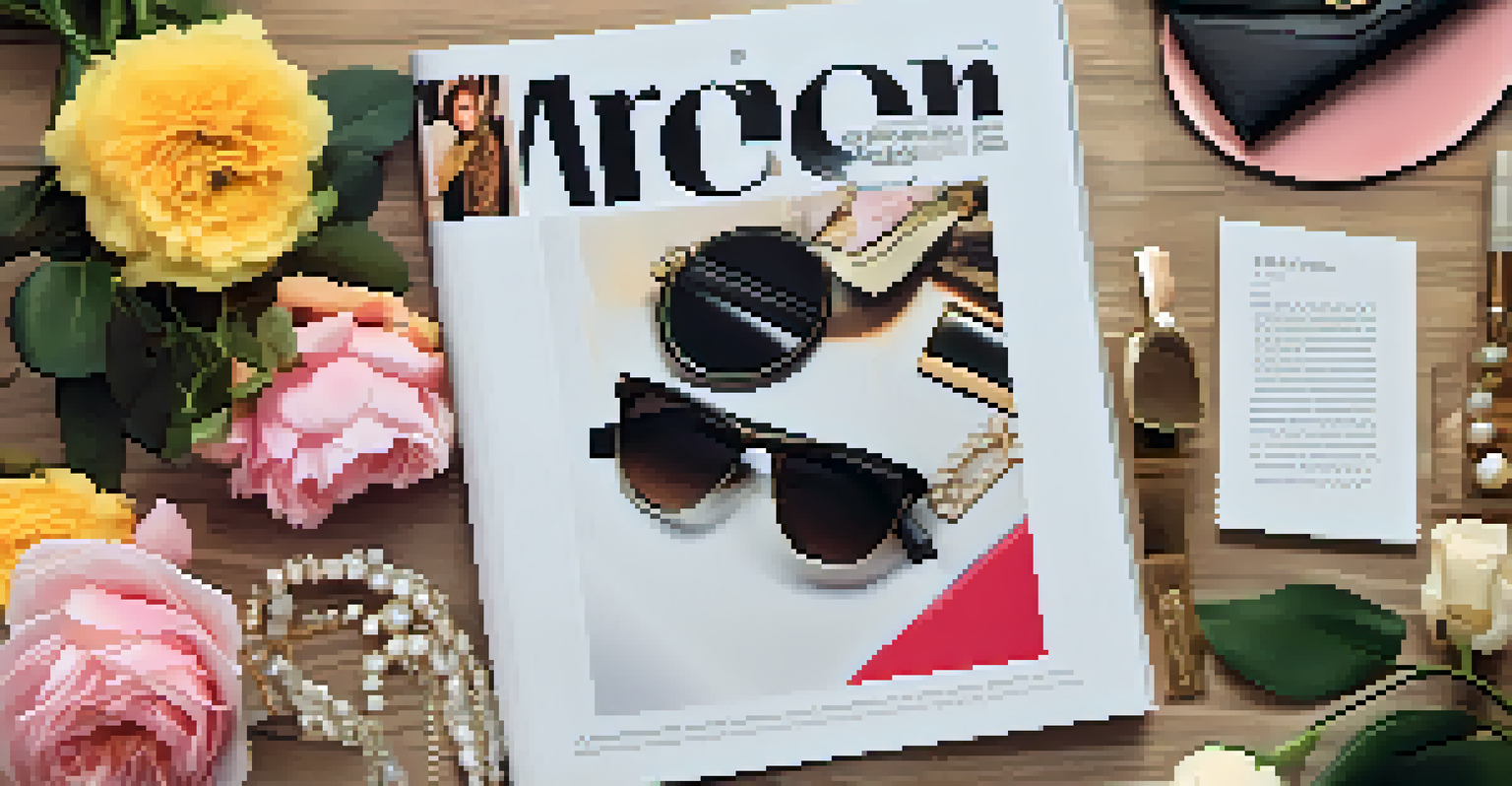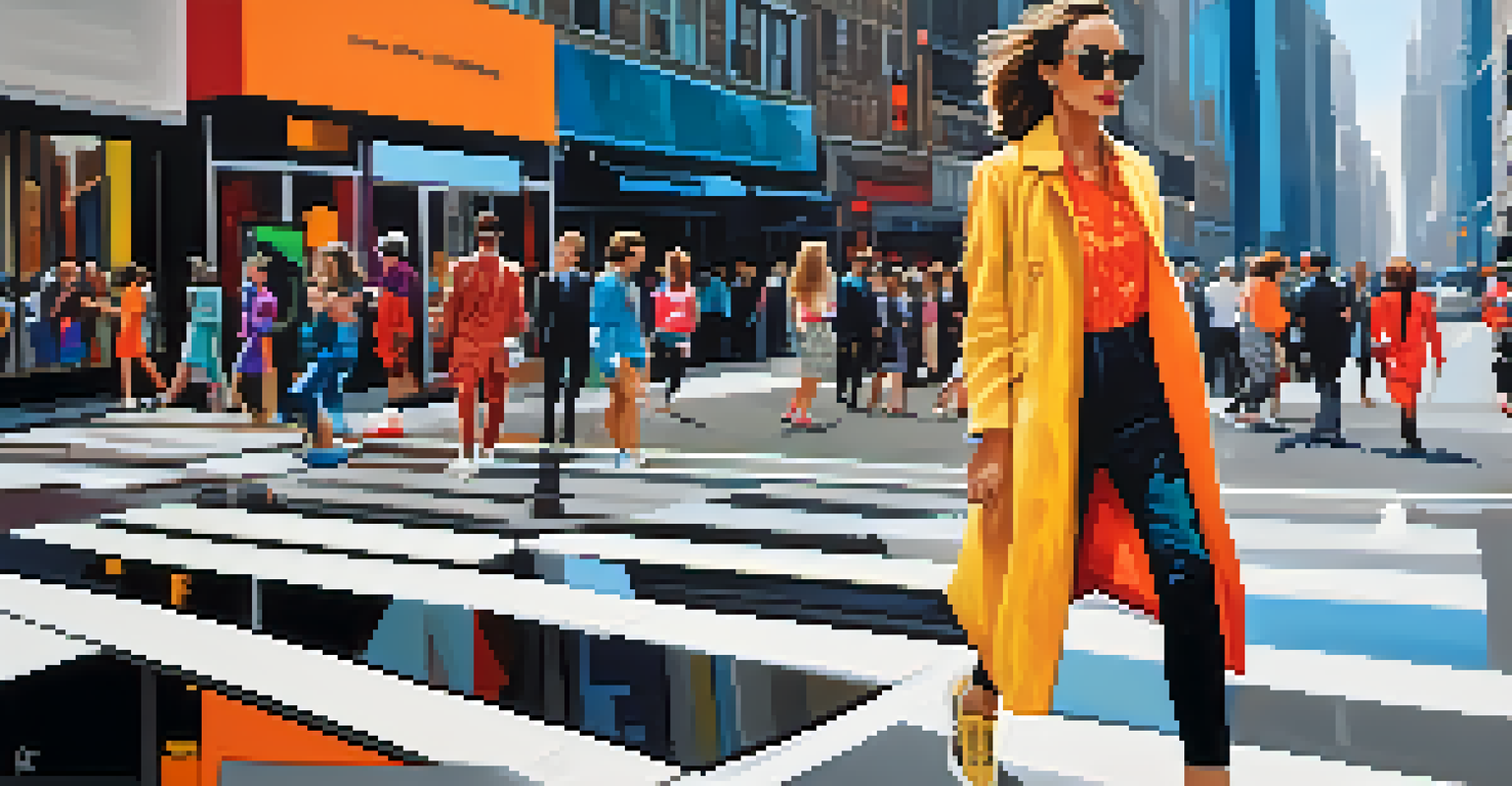The Impact of Fashion Magazines on Modern Style Trends

Fashion Magazines: The Trailblazers of Style Trends
Fashion magazines have long been the pioneers of style, showcasing the latest trends and inspiring readers. With their glossy pages filled with vibrant images, they bring high fashion into the daily lives of everyday people. These magazines often set the tone for what’s considered 'in' or 'out', influencing designers and consumers alike.
Fashion is the armor to survive the reality of everyday life.
Through editorial shoots and celebrity features, fashion magazines craft a narrative around style that resonates with their audience. They not only present current trends but also help define cultural moments, bridging the gap between haute couture and street style. For many, flipping through these pages becomes a source of inspiration, encouraging personal style exploration.
Moreover, the power of fashion magazines lies in their ability to create desire. A single photograph can spark a trend that captivates millions, showcasing how a piece of clothing or an accessory can transform an outfit. This phenomenon highlights the magazines' role as tastemakers, guiding readers to discover and embrace new styles.
The Role of Editorial Content in Shaping Trends
Beyond just showcasing clothes, editorial content plays a crucial role in shaping fashion trends. Articles often explore the history of a trend or its cultural significance, helping readers understand the 'why' behind what they wear. This deeper connection fosters a sense of community among fashion enthusiasts who share similar interests.

Additionally, editorials frequently highlight emerging designers and styles, giving them a platform to shine. By featuring fresh talent, magazines help diversify the fashion landscape, encouraging readers to embrace new aesthetics. This support can lead to trends that reflect a broader spectrum of creativity and individuality.
Magazines Shape Fashion Trends
Fashion magazines serve as tastemakers, influencing both designers and consumers by showcasing current styles and cultural narratives.
The storytelling aspect of editorial content also allows for emotional connections to fashion. Readers may find themselves drawn to a particular style because it resonates with their personal experiences or aspirations. This emotional engagement is what keeps readers returning to their favorite magazines, eager for the next trend revelation.
Celebrity Influence: How Stars Shape Fashion Trends
Celebrities have a monumental impact on fashion trends, largely due to their coverage in magazines. When a star is photographed in a particular outfit, it often becomes an instant hit, influencing fans and fashionistas alike. This phenomenon shows how closely intertwined celebrity culture and fashion really are.
In the world of fashion, trends are like the wind; they come and go, but style is eternal.
Fashion magazines capitalize on this connection by featuring celebrities in stylish spreads, often highlighting their unique fashion choices. From red carpet looks to casual street style, these images inspire readers to emulate their favorite stars. This not only boosts sales but also establishes a direct link between celebrity influence and consumer behavior.
Moreover, social media has amplified this effect, as many celebrities now use platforms to showcase their fashion choices in real-time. Magazines that adapt to this trend by integrating social media content enrich their narratives, making them even more relevant. This blend of traditional and modern influences keeps readers engaged and encourages trend experimentation.
The Rise of Fast Fashion: A Response to Magazines
The rise of fast fashion can be largely attributed to the influence of fashion magazines. As trends are highlighted in these publications, consumers seek to replicate the looks without breaking the bank. This demand has led to the emergence of fast fashion brands that quickly produce affordable versions of high-fashion garments.
While this accessibility allows more people to engage with fashion, it also raises concerns about sustainability. The rapid production cycles and disposable nature of fast fashion contribute to environmental degradation. Magazines now find themselves in a dilemma, as they promote trends that may not align with sustainable practices.
Celebrities Drive Fashion Choices
Celebrity influence in fashion is magnified through magazine features, prompting fans to emulate their favorite stars' styles.
However, some fashion magazines are adjusting their focus by advocating for sustainable fashion choices. They highlight brands that prioritize ethical production and eco-friendly materials, encouraging readers to make more conscious decisions. This shift demonstrates the evolving role of magazines in promoting responsible fashion consumption.
Social Media: A New Frontier for Fashion Trends
Social media has revolutionized the way fashion trends are disseminated, creating a new platform for influence. Fashion magazines have adapted by incorporating social media trends into their content, recognizing the importance of platforms like Instagram and TikTok. This shift reflects the changing landscape of fashion communication.
Influencers and content creators now play a vital role in shaping trends, often bypassing traditional magazine channels. Their ability to reach large audiences instantly allows for rapid trend cycles, making fashion more dynamic than ever. This evolution challenges magazines to remain relevant in a fast-paced digital world.
Despite the rise of social media, fashion magazines still hold significant authority. They curate and contextualize trends, offering deeper insights that social media often lacks. By blending traditional and digital approaches, magazines can continue to influence and inspire readers in this new era of fashion.
The Impact of Globalization on Fashion Trends
Globalization has profoundly impacted fashion trends, allowing styles from different cultures to merge and influence one another. Fashion magazines play a crucial role in this exchange, showcasing diverse styles from around the world. This exposure encourages readers to appreciate and adopt global influences in their wardrobes.
As brands expand internationally, they often look to fashion magazines to understand regional preferences and trends. This insight allows them to tailor their offerings to different markets while maintaining a cohesive brand identity. The result is a rich tapestry of styles that reflects the interconnectedness of our world.
Social Media Transforms Trendsetting
The rise of social media has created a new fashion landscape, where influencers rapidly shape trends and challenge traditional magazines.
However, this blending of cultures also raises questions about cultural appropriation in fashion. Magazines are increasingly tasked with navigating this sensitive topic, promoting respect and understanding of cultural origins. By doing so, they can foster a more inclusive fashion landscape that honors diverse influences.
The Future of Fashion Magazines in Trendsetting
As the fashion landscape continues to evolve, the future of fashion magazines is filled with opportunities and challenges. They must adapt to changing consumer behaviors while maintaining their role as trendsetters. This may involve embracing new technologies and storytelling methods to engage readers more effectively.
The integration of augmented reality (AR) and virtual reality (VR) could transform how readers experience fashion magazines. Imagine flipping through a magazine and being able to see 3D renderings of outfits or interactive styling tips. This innovation could create an immersive experience that truly captivates the audience.

Ultimately, the enduring appeal of fashion magazines lies in their ability to inspire and educate. By staying true to their roots while embracing change, they can continue to influence modern style trends for years to come. This adaptability will ensure that fashion magazines remain a vital part of the fashion ecosystem.